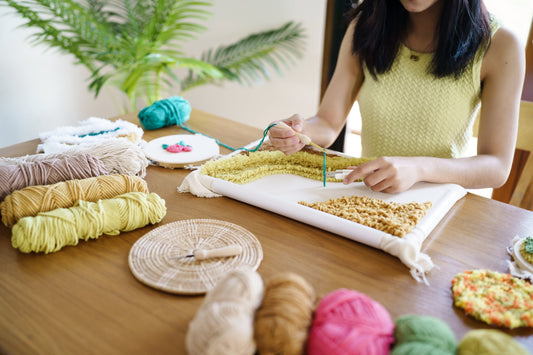
How to Make an Ocean Resin Art Masterpiece
An ocean or beach scene is by far the most widely used resin art design. I'm sure you've lusted after your fair share of resin art oceans if you're reading this. Studies have shown that people are unconsciously drawn to objects that resemble bodies of water, so it's no surprise that ocean resin art has become so well-liked. Ocean resin art is also captivating to look at. These resin beach landscapes may appear extremely intricate and spectacular, but they are actually pretty easy to make.
Your ocean scene's surface must be chosen first. Do you want some crashing waves on the handle of a cheese board? A large-scale painting of an ocean scene? Maybe some sand-themed coasters? Plan where you want your resin to go on the surface base you choose.
Additionally, you must choose whether you want to build a deep marine masterpiece or a beach scene with sand and shells as the main elements.
What Do I Need To Get Started?
Get ready to pour by grabbing a Drippy Starter Kit in the colour palette "Ocean" for all the colours you could possibly need for a sea-themed creation! Or build your own kit with the wide range of resin art supplies we have in store.

Step 1: Plan & Prepare
Get a general idea of where you want your resin design to be on the board. Give the area you wish to coat in resin a light sand once you have a rough layout in mind. Cutting boards and cheeseboards are frequently coated with an oil-based varnish, and resin doesn't like to adhere evenly to oil-based materials. Sanding the board will ensure that the resin covers it properly and dries smoothly. Make sure to smooth the sides of the board as well if you want the resin to flow over them.
Step 2: Masking & Taping
The majority of resin art cheeseboards have a design that just covers a piece of the board; the best technique to achieve this effect is to simply pour the resin strategically rather than taping off the area of the board where you want it to stop. Make sure to remove the tape border before the resin is totally dried, or around three hours into the curing time, if you really, really want your resin design to end in a straight line rather than an organic-looking edge.
If you want to avoid the underside of the serving board or coaster, then it is a good idea to cover this area with tape also.
Step 3: Mix Your Resin & Add Colour
Following the manufacturer's instructions, prepare your resin and begin adding the required coloured pastes or pigments in various mixing containers.
Pour your deepest blue first, followed by your mid-blue, and then your lightest blue, working from darkest to lightest. Next, create a lovely gradient by blending one colour into the next with a spatula or your gloved finger.

Step 4: It's time to make some waves!
Pour white resin steaks where you want the waves to appear on your blue gradient. Then, blow the white resin over the blue with a hairdryer or a little bit of huffing and puffing until the wave is where you want it. Spreading the white pigment will cause cells to appear, along with some beautiful wave effects. Make sure you use enough white pigment in your resin to create the wave effects; otherwise, the crashing wave effect won't have the desired impact.
Step 5: Let It Cure
The moment you are satisfied with the appearance of your resin ocean, let it cure. To preserve all the wonderful details you worked so hard to create, make sure the surface you're working on is level.
Step 6: Add Some Depth
The more layers of resin you use, the more realistic your work will appear since each additional layer adds depth, intriguing textures, and the ability to build on the previous wave layers. Pour clear resin over the ocean, stopping just short of the shoreline, and adding another layer of detail while keeping the resin transparent enough to see through the initial layer. Once again, stopping just short of the beach with your wave will add some complexity to your wave details and make it appear as though the crashing waves are rolling over one another. Next, mix up more white and pour more waves wherever you like them.



